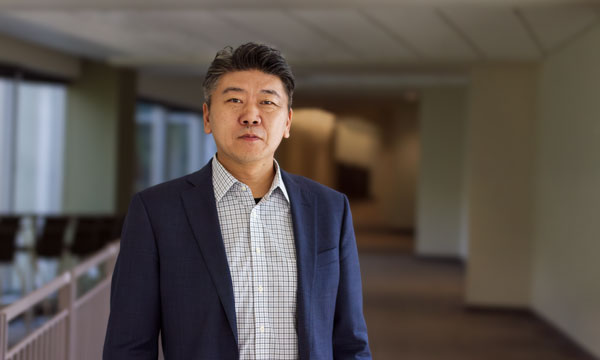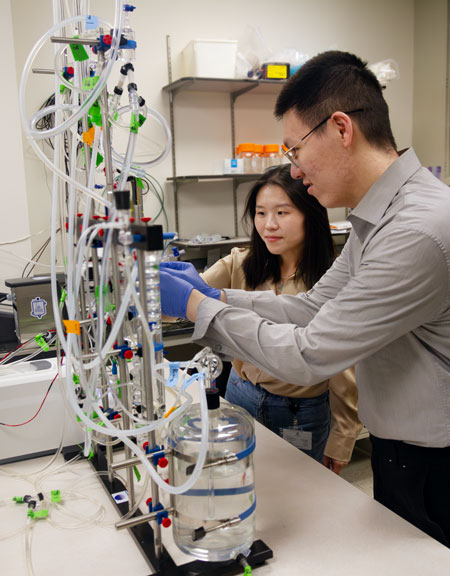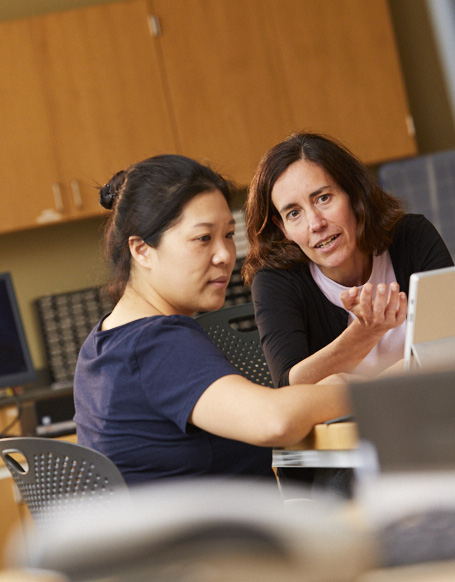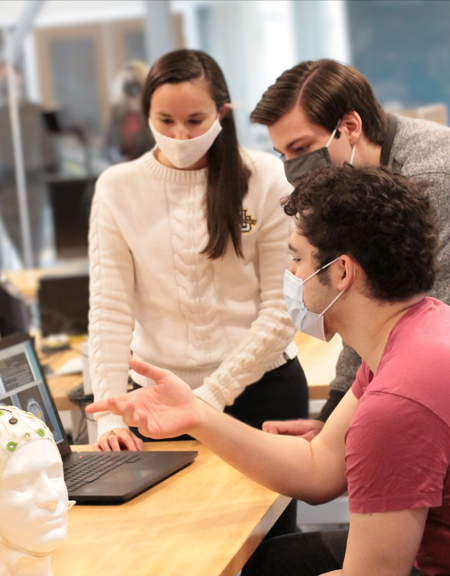Two exceptional institutions.
One outstanding educational experience.
The Marquette University and Medical College of Wisconsin Joint Department of Biomedical Engineering is dedicated to delivering an extraordinary educational experience designed to empower the next generation of biomedical engineers, scientists and physicians. If you have a passion for learning and a desire to translate ideas into action—particularly those involving medical devices and health care technologies—let our faculty, staff and industry partners guide you on your journey.
News and Events

Bright Futures for Biomedical Engineers
A Q&A with Dr. Hu Yang, Marquette and Medical College of Wisconsin's new chair of Biomedical Engineering
Dr. Hu Yang was named chair of the Marquette University and Medical College of Wisconsin Joint Department of Biomedical Engineering in July, taking on the role following a nationwide search from both institutions to find the department’s next leader. Hu was also appointed as a professor with tenure and awarded the Dr. Robert D. and Dr. Patricia E. Kern Professorship in Biotechnology and Bioengineering Endowed Chair.
Yang previously served as chair, professor and the Linda and Bipin Doshi Endowed Chair in the Linda and Bipin Doshi Department of Chemical and Biochemical Engineering at Missouri University of Science and Technology in Rolla, Missouri.
In a Q&A, Yang shares more about himself and his vision for biomedical engineering education and research at Marquette and MCW.
One of the most exciting aspects of the BME Department is the potential to advance your learning, problem-solving skills and engineering proficiency through exposure to engineering professors, industry mentors and faculty physicians who are working diligently to find solutions to modern health care challenges.
You can divide your time between the Marquette and MCW campuses, as well as clinical partner locations such as Froedtert Hospital, Children’s Wisconsin, the Versiti Blood Center of Wisconsin, the Clement J. Zablocki VA Medical Center, Shriners Hospitals for Children and other labs around the world.
Your courses will take place on the main campus of Marquette University. However, you will have access to MCW faculty for specialized courses and experiences, as well as summer medical research programs on the MCW campus.
![]() Follow BME on 'X' (formerly Twitter)
Follow BME on 'X' (formerly Twitter)




 Research Opportunities
Research Opportunities Graduate Programs
Graduate Programs Bachelor's Programs
Bachelor's Programs